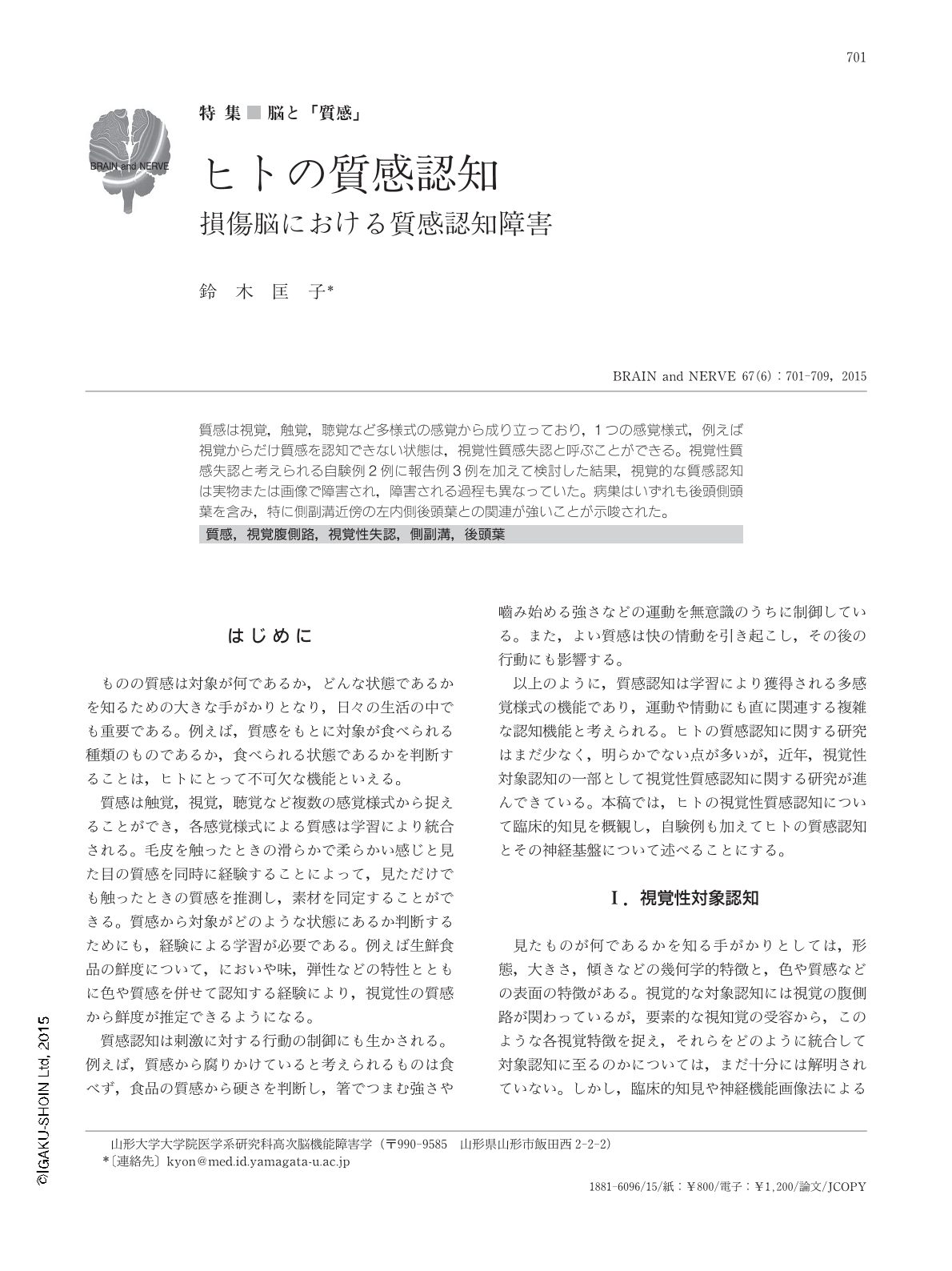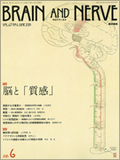Japanese
English
- 有料閲覧
- Abstract 文献概要
- 1ページ目 Look Inside
- 参考文献 Reference
- サイト内被引用 Cited by
質感は視覚,触覚,聴覚など多様式の感覚から成り立っており,1つの感覚様式,例えば視覚からだけ質感を認知できない状態は,視覚性質感失認と呼ぶことができる。視覚性質感失認と考えられる自験例2例に報告例3例を加えて検討した結果,視覚的な質感認知は実物または画像で障害され,障害される過程も異なっていた。病巣はいずれも後頭側頭葉を含み,特に側副溝近傍の左内側後頭葉との関連が強いことが示唆された。
Abstract
Visual object recognition requires the processing of both geometric and surface properties. Patients with occipital lesions may have visual agnosia, which is impairment in the recognition and identification of visually presented objects primarily through their geometric features. An analogous condition involving the failure to recognize an object by its texture may exist, which can be called visual texture agnosia. Here we present two cases with visual texture agnosia. Case 1 had left homonymous hemianopia and right upper quadrantanopia, along with achromatopsia, prosopagnosia, and texture agnosia, because of damage to his left ventromedial occipitotemporal cortex and right lateral occipito-temporo-parietal cortex due to multiple cerebral embolisms. Although he showed difficulty matching and naming textures of real materials, he could readily name visually presented objects by their contours. Case 2 had right lower quadrantanopia, along with impairment in stereopsis and recognition of texture in 2D images, because of subcortical hemorrhage in the left occipitotemporal region. He failed to recognize shapes based on texture information, whereas shape recognition based on contours was well preserved. Our findings, along with those of three reported cases with texture agnosia, indicate that there are separate channels for processing texture, color, and geometric features, and that the regions around the left collateral sulcus are crucial for texture processing.

Copyright © 2015, Igaku-Shoin Ltd. All rights reserved.


